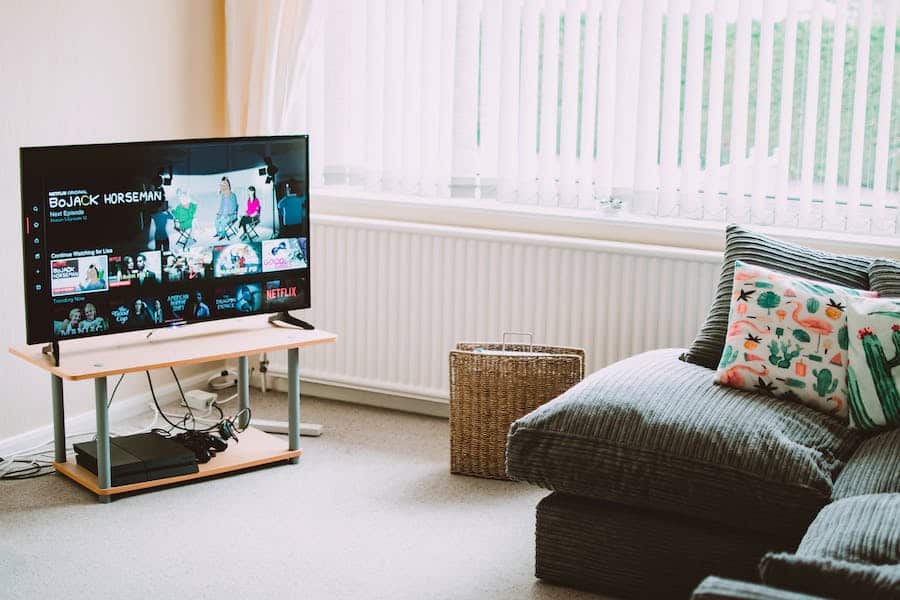
Using a television as a computer monitor has become an increasingly popular choice for many users seeking a larger, more immersive display for their computing needs. With the versatility of modern TVs and the potential cost savings, it’s an option that piques the interest of both casual users and professionals. However, deciding to repurpose a TV for this purpose has drawbacks and considerations. This article will explore the advantages and disadvantages of using a TV as a computer monitor, helping you decide whether this setup is correct for your specific needs.
Is it bad to use a TV as a computer monitor?
Using a TV as a computer monitor can have its pros and cons. On the positive side, it offers a larger screen for immersive experiences and can be cost-effective. However, there are drawbacks, such as lower pixel density, input lag, and potential overscan/underscan issues. Whether it’s “bad” depends on your specific needs and preferences. It can work well for some tasks, like gaming or media consumption. Still, it may be better for tasks requiring high resolution and fast response times, like professional video editing or graphic design. Ultimately, weighing the advantages and disadvantages based on your usage scenario is essential before making a decision.
Advantages Of Using A TV As A Computer Monitor
Size and Immersive Experience: One of the most significant advantages is the size of the screen. TVs are generally larger than traditional computer monitors, offering a more expansive viewing area. This can be particularly beneficial for tasks that require multitasking, such as video editing, 3D modeling, or programming, where having multiple windows open simultaneously can boost productivity. Additionally, a larger screen can provide a more immersive and cinematic experience for gaming and multimedia consumption.
Cost-Effective Option: Repurposing a TV as a computer monitor can save you substantial money. High-quality computer monitors with large screens can be pretty expensive, while you may already own a TV with a compatible size and resolution. This cost-effectiveness is especially appealing if you’re on a budget or looking to maximize the value of your existing hardware.
Multiple Connectivity Options: Modern TVs have various connectivity options, including HDMI, DisplayPort, VGA, and USB ports. These versatile connections make connecting your computer, gaming console, Blu-ray player, or other devices to the TV easy. This flexibility ensures you can switch between sources effortlessly, enhancing your overall user experience.
Built-In Speakers: Many TVs include built-in speakers with reasonably good audio quality. This can be advantageous for those who want a simple and clutter-free setup without needing external speakers. While dedicated computer monitors may require additional investments in speakers or headphones, TVs often provide a convenient all-in-one solution.
Versatile Usage: A TV is not limited to serving solely as a computer monitor. It can function as a television for watching cable or streaming content, a gaming console screen, or a presentation display in a home office or business setting. This versatility means maximizing the utility of a single device for various purposes.
Cost Savings on Multifunctional Devices: Using a TV as a computer monitor can reduce the need for additional devices and screens. This consolidation can save both space and money. The TV-as-a-monitor approach offers an elegant solution for those with limited room for multiple displays or looking to minimize clutter.
Easy Setup: Connecting a computer to a TV is usually straightforward, primarily if using HDMI. Most modern operating systems automatically detect and configure the display settings, making it accessible even for users with minimal technical expertise. This simplicity ensures a hassle-free setup process.
Enhanced Viewing for Media and Entertainment: The larger screen size and often superior display quality of TVs can significantly enhance the viewing experience for various media and entertainment activities. Whether watching movies, streaming content, playing video games, or engaging in photo and video editing tasks, a TV can provide stunning visuals and immersive entertainment.
Disadvantages Of Using A TV As A Computer Monitor
Using a TV as a computer monitor has its advantages, but it also comes with several disadvantages to consider:
Lower Pixel Density:
TVs typically have a lower pixel density (pixels per inch) than dedicated computer monitors. This means that the exact resolution on a larger screen can result in larger individual pixels, potentially reducing image clarity and text readability, especially when viewed up close.
Input Lag and Response Time:
TVs are not optimized for the low input lag and fast response times required for gaming and fast-paced computer tasks. Many TVs may exhibit noticeable input lag, causing a delay between your actions and on-screen reactions, frustrating gamers, and impacting overall productivity.
Overscan and Underscan Issues:
Some TVs have an ” overscan ” feature enabled by default, which zooms slightly on the image to eliminate any potential border noise from older broadcasts. This can cause parts of the screen to be cut off, making it challenging to see all of your computer’s content. On the other hand, “underscan” can result in black borders around the image, reducing screen real estate.
Lack of Ergonomic Features:
Dedicated computer monitors often come with ergonomic features like height adjustment, swivel, and pivot capabilities, allowing you to customize the screen position for optimal comfort and posture during long periods of use. Most TVs lack these ergonomic features, potentially leading to discomfort or strain during extended computer sessions.
Limited Screen Refresh Rates:
While some modern TVs offer high refresh rates suitable for gaming, many standard TVs are limited to 60Hz. Gamers who demand smoother and more responsive gameplay may find this limitation restrictive compared to dedicated gaming monitors with higher refresh rates.
Size May Not Be Ideal for Close Proximity:
The larger screen size of a TV can be advantageous, but it may only be suitable for some scenarios, especially in small or cramped spaces. Using a vast TV as a close-range computer monitor can result in neck strain and discomfort, as you may need to shift your gaze constantly.
Power Consumption:
TVs generally consume more power than smaller computer monitors. If energy efficiency is a concern or you plan to use the TV for extended periods, it can lead to higher electricity bills over time.
Resolution Limitations:
While some TVs offer 4K or even 8K, many still have lower resolutions, such as 720p or 1080p. This can limit the level of detail and screen real estate available for tasks requiring high-resolution displays, like graphic design, video editing, or fine text and graphics.
Compare The Cost Of A TV To Traditional Computer Monitors
The cost of a TV compared to traditional computer monitors can vary significantly depending on various factors such as size, brand, features, and specifications. Here’s a general comparison of the cost differences:
- Size: TVs are typically larger than computer monitors. While larger screens can benefit specific tasks, they also tend to be more expensive. Smaller TVs (around 32 inches) might be competitively priced with smaller computer monitors, but TVs become relatively more expensive as you increase.
- Resolution: TVs often come in various resolutions, including Full HD (1080p), 4K (2160p), and even 8K. Higher resolutions generally increase the price. In contrast, computer monitors may have higher pixel densities at smaller sizes, which can also affect their pricing.
- Refresh Rate: Gaming monitors often have higher refresh rates (e.g., 144Hz or 240Hz) than typical TVs (usually 60Hz). Monitors with high refresh rates designed for gaming are more expensive due to the specialized hardware required.
- Panel Technology: TVs and monitors use different panel technologies like IPS, TN, or OLED. The choice of panel technology can impact the cost, with OLED panels generally being more expensive due to their superior image quality.
- Additional Features: Many TVs come with built-in innovative features, multiple HDMI ports, advanced color calibration, and audio enhancements, all of which can add to the cost. Computer monitors, especially those designed for professional use, may have color-accurate displays and specialized features for productivity or design tasks.
- Gaming-Specific Features: Gaming monitors often include features like NVIDIA G-Sync or AMD FreeSync, which can further increase their cost. These technologies help reduce screen tearing and enhance gaming performance.
- Connectivity: Monitors usually have a limited number of input ports, while TVs tend to have more extensive connectivity options. TVs may include features like cable or satellite tuners, which can impact their price.
Factors To Consider Before Using A TV As A Computer Monitor
Several important factors should be considered before using a TV as a computer monitor to ensure the setup meets your specific needs and preferences. Here are the key factors to keep in mind:
Assess whether the TV’s size and resolution suit your intended use. Consider how close you’ll be to the screen and whether the TV’s resolution provides adequate pixel density for tasks like reading text or editing images.
Determine the TV’s refresh rate, which can affect the smoothness of motion and overall gaming performance. If you’re a gamer or require a responsive display, consider a TV with a higher refresh rate, although these tend to be more common in gaming monitors.
Check the TV’s input lag and response time, especially if you plan to use it for gaming or tasks requiring fast, real-time interactions. Lower input lag and faster response times are essential for a responsive user experience.
Ensure your computer’s video output (e.g., HDMI, DisplayPort) matches the TV’s input ports. Check if the TV supports the required video and audio standards. Adapters and converters may be necessary if there are compatibility issues.
Some TVs have overscan enabled by default, which can crop the edges of your computer’s display. Explore the TV’s settings to disable overscan or underscan to ensure your computer screen is visible.
Consider the TV’s physical placement and how it will affect your ergonomics and viewing comfort. Larger TVs may require you to sit farther back to avoid neck strain. Adjustable mounts or stands can help improve the viewing angle.
Think about your primary use cases. Will you use the TV primarily for productivity, gaming, media consumption, or a combination? Different use cases may have varying resolutions, refresh rates, and response time requirements.
Assess the TV’s built-in speakers if you plan to use them. While some TVs offer decent sound quality, dedicated external speakers or headphones may be necessary for a better audio experience, primarily for gaming and multimedia.
Conclusion
Whether using a TV as a computer monitor is a good or bad idea depends on your specific needs, preferences, and the TV’s characteristics. While it offers advantages such as a larger screen and cost-effectiveness, it also presents disadvantages like lower pixel density and potential input lag. Before deciding, consider factors like TV size, resolution, refresh rate, compatibility, and ergonomic adjustments. Setting up a TV as a computer monitor requires careful attention to detail, including selecting the suitable cable, configuring settings, and ensuring optimal performance.


